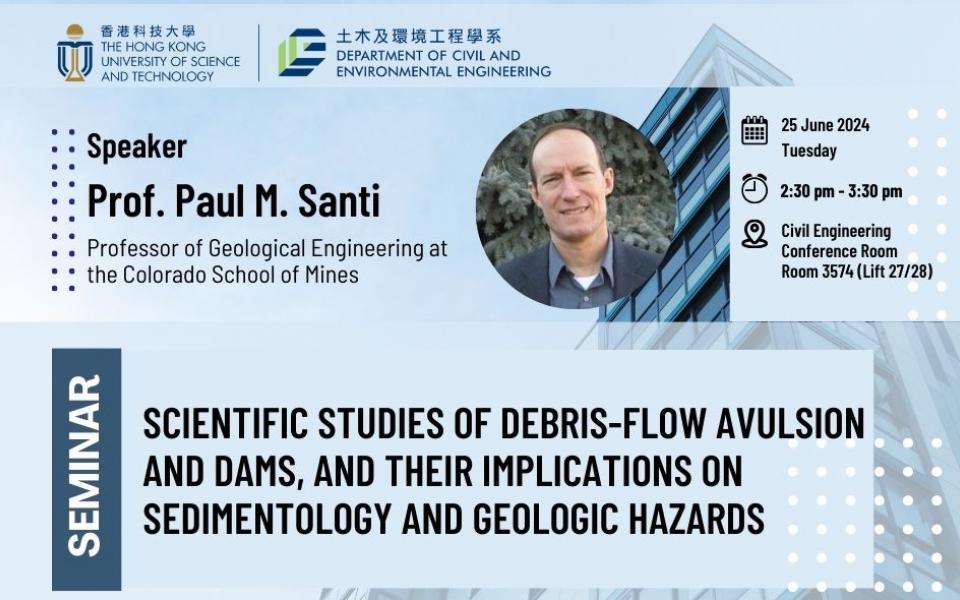Civil Engineering Departmental Seminar - Scientific studies of debris-flow avulsion and dams, and their implications on sedimentology and geologic hazards
Scientific studies of debris-flow avulsion and dams, and their implications on sedimentology and geologic hazards
Sediment dams and avulsions exert powerful controls on the flow paths and deposits of debris flows. These processes are not well understood and difficult to predict, in spite of their importance for both fan stratigraphy and hazards posed by debris flows.Several recent studies provide tools to help in this respect. Using six debris fans in the White Mountains of California and Nevada USA, we show that a predictive equation relying on percentage of boulders, channel slope and width, and flow thickness predicts about two-thirds of avulsion locations.Adding information on channel plugs, or local dams, greatly improves the prediction. In a second study, we show that the likelihood of avulsion can be quantified using a modified compensation index, which measures the degree of compensational stacking – the tendency of deposits to either stack in place or to avulse and fill topographic low areas. Highly compensational fans, where flows tend to avulse frequently, are more dangerous and are characterized by abundant coarse clasts, fewer layers of classic stream deposits, thick and wide flows (with high width to thickness ratio), high clay fraction, and larger distances from the fan apex. Since the modified compensation index depends on difficult-to-find cross-fan exposures, we show that the index can be reasonably predicted from one dimensional data such as boreholes or stratigraphic columns created from channel incisions by using correlations to variability of unit thicknesses within the column. Finally, through laboratory scale models, we explore the changes in the avulsion as a fan matures and builds over time.
Dr. Paul Santi is a Professor of Geological Engineering at the Colorado School of Mines. His recent research has focused on analysis, prediction and mitigation design for debris flows, landslide analysis, and general geologic hazard analysis. He holds Bachelor’s degrees in Geology and Physics from Duke University, an MS in Geology from Texas A&M, and a PhD in Geological Engineering from the Colorado School of Mines. He is a Fellow of the Geological Society of America, he has been the chair of the Engineering Geology Division of that organization, and he has been the President of the Association of Environmental and Engineering Geologists.He is currently the director of the Institute for Initiatives in Latin America, which manages multiple research projects with partner universities in Peru.
